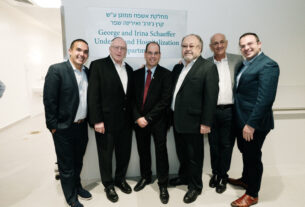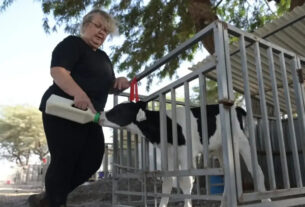Can anything minimize the serious polarization among groups in countries like Israel and the US? With the global escalation in conflicts among population groups, acts of violence by residents of cities and the increasing participation of youth in civil conflicts, there appears to be an urgent need to develop science-based methods to mitigate hatred and aggression and foster empathy and dialogue among youth growing up in the reality of a long-term conflict.
Eight sessions of dialogue-enhancing interventions among Jewish and Arab youth resulted in an impact on brain function, hormonal response, social behavior and attitudes towards the conflict and gains were retained seven years later.
Prof. Ruth Feldman, director of the Center for Developmental Social Neuroscience at Reichman University’s Ivcher School of Psychology, together with her research partners, examined whether it’s possible to build an intervention for teenagers from polarized groups in a society that has experienced multigenerational conflict, based on findings from the field of neuroscience. They wondered whether such interventions improve the brain’s reactions towards others, and can these improvements be preserved over time?
Working with Dr. Shafiq Masalha, Dr. Moran Influs and Dr. Jonathan Levy, Feldman worked on new perspectives from neuroscience – particularly from social neuroscience – and the long-term research conducted in her lab on the “biology of love” and hatred.
The tools of dialogue
For the study, the researchers built a unique synchrony-focused intervention and examined its effects on the neural and hormonal responses and communication behavior among Jewish and Arab adolescents. The intervention, entitled “Tools of Dialogue” is a manualized group intervention of eight meetings between Jewish and Arab teenagers.
Each meeting lasted about two-and-a-half hours and was held in groups of 12 boys or girls, half of them Jews and half of them Arabs. The sessions were led by two mediators, one Jewish and one Arab, both of which have vast experience in facilitating Jewish-Arab groups.
Each meeting began and ended with a synchronous group ritual such as familiar songs, movement and expression exercises that released tensions and caused the group to unite, biologically and behaviorally, into one bio-behavioral unit. Then the topic of the meeting was introduced and the group was divided into pairs or groups of four, comprising Jews and Arabs who had worked on specific assignments on the topic to be presented to the group.
A focus on behavior
During the intervention, the researchers focused on behavior and the acquisition of behavioral tools for conducting dialogue, with the aim of teaching the youths how to foster a respectful dialogue with others even if they did not agree with their views to develop empathy to the other side, and understand the behavioral and mental obstacles to dialogue such as prejudice. There was a conscious decision to avoid any discussion about the essence of the Jewish-Arab conflict or about “who is right” or “who is the victim.” If these topics came up, the focus was on the behavioral techniques of holding a discussion and how to keep two perspectives in mind, even when you believe in your own wholeheartedly.
“Our research findings showed that youth who received the intervention showed a broad and multidimensional bio-neurobehavioral change and the intervention gains lasted for years,” said Feldman. “This study is the first of its kind to show that an intervention based on increasing behavioral synchrony in groups engaged in intractable conflict stimulates the brain’s empathic response, attenuates the neural basis of prejudice, reduces the cortisol response (stress), increases oxytocin (love) and shapes interpersonal interaction that is more mutual and less hostile. This change is evident in the participants even after seven years, and the youth who underwent the intervention developed more tolerant attitudes towards the other, believed in finding a solution, and were actively involved in initiatives for dialogue and peace as young adults.”




